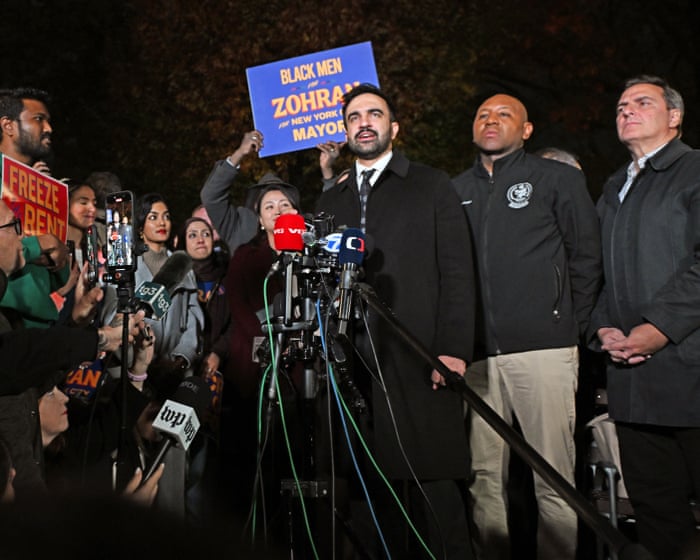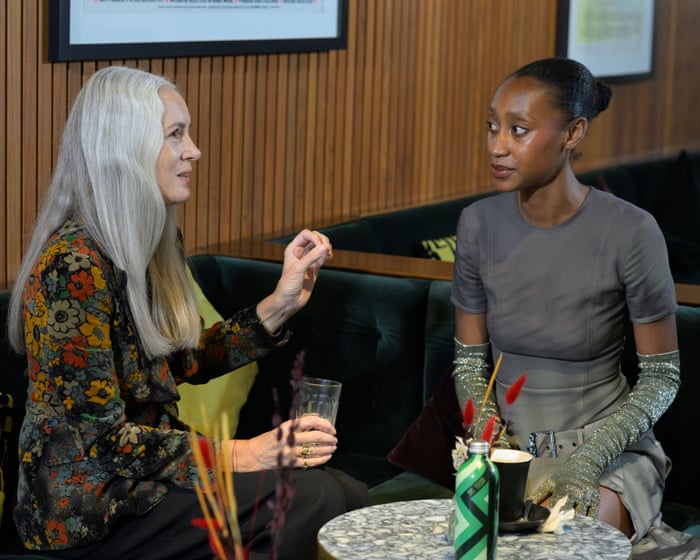A year after Donald Trump returned to the White House, voters are heading to the polls again. This election will test the president’s popularity and whether Democrats can recover from their devastating losses in 2024.
Key races for governorships, mayoral offices, state legislatures, and mid-decade redistricting are being closely watched from New Jersey and Virginia to New York City and beyond. Democrats are relying on locally focused campaigns to counter a rising conservative national message.
The party is facing its worst popularity crisis in decades. Its favorability hit a record low of 27% in a March NBC News poll—the poorest showing since tracking began in 1990. Many Democrats are frustrated with the party’s response to Trump’s 2024 win and feel it has lost touch with everyday voters.
However, recent polling from Gallup in September and analysis by pollster G. Elliott Morris in October suggest a shift may be happening. Democrats are now leading Republicans on economic management—Trump’s key issue.
Tuesday’s results will indicate if Democrats can rebuild after 2024 or if conservative momentum will secure them power for years to come. The stakes are high everywhere: Virginia offers Democrats a prime pickup opportunity; New Jersey is a battleground where the party hopes to hold its ground; and in New York City, a progressive nominee could become the party’s most prominent left-wing leader, potentially uniting Democrats. Meanwhile, a “yes” on California’s Proposition 50 would signal how far voters are willing to go to challenge Trump.
Spotlight on Mamdani, Sherrill, and Spanberger
In New York, New Jersey, and Virginia, candidates are rallying around similar themes: taxes, housing, schools, and public safety. Another common thread is the strong dislike for Trump that has grown in each state, leading Republicans to distance themselves from Washington.
According to recent CNN polling, Trump’s disapproval rating has soared to 63%, with double-digit disapproval in New York City, New Jersey, and Virginia.
In New York City, Democratic socialist Zohran Mamdani, a 34-year-old assemblyman, is running a hyper-local campaign focused on housing, the economy, and public transit. Backed by a grassroots coalition that helped him win a surprising primary, he leads a divided field that includes Republican Curtis Sliwa and independent candidate Andrew Cuomo, the former Democratic governor.
While Mamdani’s pro-Palestinian stance has drawn Islamophobic attacks, his platform centers on local issues like rent freezes, free buses, and universal childcare—avoiding national culture wars. Recent Emerson College polls show him 25 points ahead of Cuomo.
Cuomo, running as an independent after losing the Democratic primary, is leveraging his name recognition and managerial experience. His candidacy splits the Democratic vote and offers moderates an alternative to Mamdani without supporting a Republican. Cuomo has gained endorsements from former mayor Michael Bloomberg, who contributed $1.5 million, and outgoing mayor Eric Adams.
In New Jersey, the race is neck-and-neck between Democratic congresswoman Mikie Sherrill and her Republican opponent.In New Jersey, Jack Ciattarelli is challenging incumbent Democrat Mikie Sherrill. While Sherrill held leads over the summer, polls by late October showed the race nearly tied, with a slight advantage for the Democrat. Both candidates are emphasizing their competence rather than ideology. Sherrill, a current Congress member, is promoting plans to lower property taxes, upgrade infrastructure, and make the state more affordable, highlighting her practical approach to easing financial burdens on families. Ciattarelli, a former state lawmaker, is also campaigning on reform, term limits, and affordability, adopting a more populist tone than in his previous run. However, he is carefully aligning himself with Trump and the MAGA movement. He aims to win over swing counties and tap into dissatisfaction with outgoing Democratic Governor Phil Murphy, whose approval rating is at 34%.
Virginia’s gubernatorial race shares similarities and differences. Democrats have united behind Abigail Spanberger, a former centrist Congresswoman and CIA officer who is focusing on affordability. She benefits from support in a region with a large federal workforce that has been targeted by Trump. Her opponent, Republican Winsome Earle-Sears, the current lieutenant governor, is emphasizing cultural issues and labeling Spanberger as a Washington insider. Polls favor Spanberger, with a late October Roanoke College survey showing her with a 10-point lead due to her cautious campaign strategy. Her closing message centers on reducing energy and healthcare costs, supporting rural hospitals, and practical solutions for housing and workforce development. Additionally, all 100 seats in the state’s House of Delegates are up for election, with Democrats leading by eight points in generic polling, though races for lieutenant governor and attorney general are close.
In Minneapolis, Mayor Jacob Frey is running for a third term amid concerns over public safety and housing. His progressive challenger, State Senator Omar Fateh, has been dubbed the “Mamdani of Minneapolis.” This election will test whether the city’s left-wing coalition can turn grassroots energy into electoral success under ranked-choice voting.
California’s Proposition 50 has become a focal point for Democratic frustration with Trump and Republican tactics. If passed, it would allow mid-decade congressional redistricting to counteract Republican gerrymandering in Texas, temporarily replacing the state’s independent commission with maps drawn by Democrats. Supported by Governor Gavin Newsom, Barack Obama, Kamala Harris, Alexandria Ocasio-Cortez, and George Soros—who contributed $10 million—the “yes” campaign has raised $121.9 million. Recent polls indicate it is likely to be approved, signaling a party willing to set aside previous principles in response to the perceived threats of Trumpism.
Republicans are testing whether Trump’s influence remains effective, aiming to mobilize his base without emphasizing his rhetoric. They are shifting focus away from his policies like national guard deployments, global tariffs, and federal workforce cuts, and instead concentrating on other issues.Republicans are focusing on issues that poll well, like crime, public safety, immigration, and education policy. They’re also trying to portray Democrats as out of touch with suburban swing voters.
In Virginia, Earle-Sears has emphasized education and cultural issues to energize conservative supporters and win over skeptical suburban voters. Her campaign has painted Spanberger as cautious and too aligned with national Democratic priorities, especially on immigration and what she labels “sanctuary state” policies. During debates and on social media, she has accused Spanberger of supporting “men in girls’ locker rooms” and being “on the wrong side of every issue.”
In New Jersey, Ciattarelli has centered his campaign on fiscal responsibility and property tax relief, tapping into concerns about the cost of living. He’s targeting swing counties where taxes and public services are key, even getting involved in regional disputes like threatening “reverse congestion pricing” if New York City moves forward with its plan.
Three main issues are top of mind for voters: the cost of living (including housing and healthcare), public safety, and education. It’s common for local issues to decide off-year elections.
In New Jersey, a late October Emerson College poll found that 52% of voters see the economy as the state’s most important issue, followed by threats to democracy (14%), housing affordability (11%), and immigration (5%). The gender gap is clear: men favor Ciattarelli by 16 points, while women support Sherrill by 18 points.
In Virginia, a Wason Center survey from late October listed voters’ top concerns as threats to democracy and inflation (both at 18%), with healthcare at 11%.
In New York City, Mamdani’s emphasis on housing affordability and transit has struck a chord with voters under 49, according to an Emerson College poll, though he trails among older voters and some outer-borough residents worried about public safety. Crime was the top issue for 26% of all city voters, but among Democrats, affordable housing ranked first.
Education has also become a contentious topic in New York, with all three major candidates presenting different plans for the nation’s largest public school system, which serves over a million students.
For Democrats, the election outcomes are both symbolic and practical. Nationally, the party aims to prove it can rebound in areas that matter to everyday voters, even after a tough presidential defeat. A win in Virginia would be their best chance for a decisive victory over Republicans, while success in New York could inspire bold, progressive policies nationwide.
For Republicans, winning key governorships and mayoral races would reinforce their strength after 2024 and potentially reshape the political landscape ahead of the 2026 midterms. A Ciattarelli victory in New Jersey would be especially meaningful, showing that suburban voters remain open to fiscal conservatism and practical governance.
Frequently Asked Questions
Of course Here is a list of helpful and concise FAQs about Democrats striving to regain ground in crucial state elections
General Beginner Questions
1 What does regaining ground in state elections mean
It means that Democrats are working to win back seats and majorities in state legislatures and governors offices that they may have lost to Republicans in previous elections
2 Why are state elections so crucial
State governments have immense power over issues that affect daily life like public school funding abortion access voting laws healthcare expansion and infrastructure projects
3 Which states are considered the most crucial for Democrats to focus on
Key battlegrounds often include Michigan Wisconsin Pennsylvania Arizona Georgia and Nevada where control of the state legislature or governorship is closely divided and has a major national impact
4 Whats the main goal for Democrats in these elections
The primary goal is to win enough seats to gain or maintain control of state legislatures and governorships This allows them to shape state policy block Republican agendas and influence the redistricting process that happens every ten years
Strategy Approach
5 What is redistricting and why is it a key part of this effort
Redistricting is the process of drawing new boundaries for congressional and state legislative districts Controlling this process helps a party create more districts that favor their candidates which can secure political power for a decade
6 What are some common strategies Democrats use to win these elections
Key strategies include
Mobilizing their base Energizing core supporters especially in urban and suburban areas
Suburban outreach Focusing on winning over moderate and independent voters in the suburbs
Fundraising Raising significant funds to support candidates and run advertising campaigns
Grassroots organizing Using volunteers for doorknocking phone banking and voter registration drives
7 What are the main issues Democrats are campaigning on
Common campaign issues include protecting abortion rights defending democracy and voting rights addressing climate change expanding access to healthcare and investing in public education
Challenges Advanced Questions
8 What are the biggest challenges Democrats face in these races
Major challenges include Republican strength in rural areas voter turnout in nonpresidential election years intense political polarization and wellfunded opposition




